Lydiafirstcoins
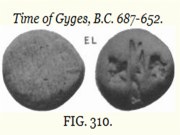 l l
BC 687-652
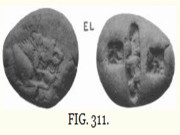
BC-610-561
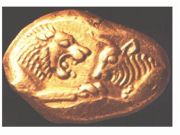
BC-560-546
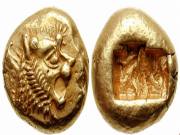
BC-560-546
|
lydia coins
![]() |
‘The Lydians,’ says Herodotus were the first people we know of to strike coins of gold and of silver’ and Xenophanes of Colophon bears witness to the same tradition. Passing from these statements of ancient writers to an examination of the earliest Asiatic essays in the craft of coining, we are led to ascribe to the seventh century B.C., and probably to the reign of Gyges (B.C. 687- 652), the founder of the dynasty of the Mermnadae and of the new Lydian empire, as distinguished from the Lydia of more remote antiquity, the first issues of the Lydian mint. These are bean-shaped ingots of the metal called by the Greeks ‘electrum’ or ‘white gold’, a natural com- pound of gold and silver, collected at Sardes from the washings of the little mountain torrent Pactolus, and perhaps from diggings on the slopes of Tmolus and Sipylus. Ingots and rings, &c., of the precious metals adjusted to fixed weights had been used for purposes of exchange for ages before the Lydians first invented the convenient process of stamping them with marks as guarantees of value. Ingots thus stamped henceforth passed freely as current coin, and, so long as they were correct in weight, the exact amount of pure gold in each lump of metal does not appear to have been taken into consideration. The generally accepted rate of exchange between pure gold and silver stood in these times as 13.3 to 1, and the mixed metal, ‘electrum,’ of very variable quality, was roughly estimated at the rate of about 10 to 1, a convenient proportion which enabled bankers and money-changers to make use of a single set of weights for electrum and silver, and which accounts for the fact that the weights of the electrum staters correspond with those of the later silver staters, and depend upon the standard which happened to be in use for weighing silver in bullion and afterwards in coin in various districts. These standards were, in Lydia, the so-called Babylonic (stater 168 grs.) and the so-called Phoenician (stater 220 grs.).
It is probable that the Babylonic standard was prevalent in the in- terior of Asia Minor, and that the Phoenician standard was the one in use in the cities of the western sea-board, and that some coins of both standards were struck at Sardes. Among the numerous types of the early electrum coins it is impossible to distinguish those which belong to Sardes from those which were issued by the Greek cities on the coast. Granting, however, that ingots were first stamped at Sardes, the fol- lowing primitive specimens may be preferably assigned to the Lydian capital.
|
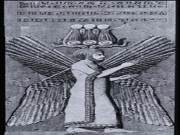
kurosh the great ( iran museum)

|